-
TABLE OF CONTENTS\r\n \r\n \r\n \r\n \r\n1. EXECUTIVE SUMMARY \r\n1.1. Market Overview \r\n1.2. Key Findings \r\n1.3. Market Segmentation \r\n1.4. Competitive Landscape \r\n1.5. Challenges and Opportunities \r\n1.6. Future Outlook \r\n \r\n \r\n \r\n2. MARKET INTRODUCTION \r\n2.1. Definition \r\n2.2. Scope of the study \r\n2.2.1. Research Objective \r\n2.2.2. Assumption \r\n2.2.3. Limitations \r\n3. RESEARCH METHODOLOGY \r\n3.1. Overview \r\n3.2. Data Mining \r\n3.3. Secondary Research \r\n3.4. Primary Research \r\n3.4.1. Primary Interviews and Information Gathering Process \r\n3.4.2. Breakdown of Primary Respondents \r\n3.5. Forecasting Model \r\n3.6. Market Size Estimation \r\n3.6.1. Bottom-Up Approach \r\n3.6.2. Top-Down Approach \r\n3.7. Data Triangulation \r\n3.8. Validation \r\n \r\n \r\n \r\n4. MARKET DYNAMICS \r\n4.1. Overview \r\n4.2. Drivers \r\n4.3. Restraints \r\n4.4. Opportunities \r\n5. MARKET FACTOR ANALYSIS \r\n5.1. Value chain Analysis \r\n5.2. Porter's Five Forces Analysis \r\n5.2.1. Bargaining Power of Suppliers \r\n5.2.2. Bargaining Power of Buyers \r\n5.2.3. Threat of New Entrants \r\n5.2.4. Threat of Substitutes \r\n5.2.5. Intensity of Rivalry \r\n5.3. COVID-19 Impact Analysis \r\n5.3.1. Market Impact Analysis \r\n5.3.2. Regional Impact \r\n5.3.3. Opportunity and Threat Analysis \r\n \r\n \r\n \r\n6. AUTOMOTIVE AUTOMATIC TRANSMISSION SYSTEM MARKET, BY TRANSMISSION TYPE (USD BILLION) \r\n6.1. Automatic \r\n6.2. Continuously Variable Transmission \r\n6.3. Dual-Clutch Transmission \r\n6.4. Semi-Automatic \r\n7. AUTOMOTIVE AUTOMATIC TRANSMISSION SYSTEM MARKET, BY VEHICLE TYPE (USD BILLION) \r\n7.1. Passenger Cars \r\n7.2. Commercial Vehicles \r\n7.3. Electric Vehicles \r\n7.4. Luxury Vehicles \r\n8. AUTOMOTIVE AUTOMATIC TRANSMISSION SYSTEM MARKET, BY COMPONENT TYPE (USD BILLION) \r\n8.1. Transmission Control Unit \r\n8.2. Transmission Fluid \r\n8.3. Torque Converter \r\n8.4. Gear Set \r\n9. AUTOMOTIVE AUTOMATIC TRANSMISSION SYSTEM MARKET, BY END USE (USD BILLION) \r\n9.1. Private Use \r\n9.2. Fleet Operations \r\n9.3. Ride-Sharing \r\n9.4. Public Transportation \r\n10. AUTOMOTIVE AUTOMATIC TRANSMISSION SYSTEM MARKET, BY REGIONAL (USD BILLION) \r\n10.1. North America \r\n10.1.1. US \r\n10.1.2. Canada \r\n10.2. Europe \r\n10.2.1. Germany \r\n10.2.2. UK \r\n10.2.3. France \r\n10.2.4. Russia \r\n10.2.5. Italy \r\n10.2.6. Spain \r\n10.2.7. Rest of Europe \r\n10.3. APAC \r\n10.3.1. China \r\n10.3.2. India \r\n10.3.3. Japan \r\n10.3.4. South Korea \r\n10.3.5. Malaysia \r\n10.3.6. Thailand \r\n10.3.7. Indonesia \r\n10.3.8. Rest of APAC \r\n10.4. South America \r\n10.4.1. Brazil \r\n10.4.2. Mexico \r\n10.4.3. Argentina \r\n10.4.4. Rest of South America \r\n10.5. MEA \r\n10.5.1. GCC Countries \r\n10.5.2. South Africa \r\n10.5.3. Rest of MEA \r\n \r\n \r\n \r\n11. COMPETITIVE LANDSCAPE \r\n11.1. Overview \r\n11.2. Competitive Analysis \r\n11.3. Market share Analysis \r\n11.4. Major Growth Strategy in the Automotive Automatic Transmission System Market \r\n11.5. Competitive Benchmarking \r\n11.6. Leading Players in Terms of Number of Developments in the Automotive Automatic Transmission System Market \r\n11.7. Key developments and growth strategies \r\n11.7.1. New Product Launch/Service Deployment \r\n11.7.2. Merger & Acquisitions \r\n11.7.3. Joint Ventures \r\n11.8. Major Players Financial Matrix \r\n11.8.1. Sales and Operating Income \r\n11.8.2. Major Players R&D Expenditure. 2023 \r\n12. COMPANY PROFILES \r\n12.1. Nissan Motor \r\n12.1.1. Financial Overview \r\n12.1.2. Products Offered \r\n12.1.3. Key Developments \r\n12.1.4. SWOT Analysis \r\n12.1.5. Key Strategies \r\n12.2. Magna International \r\n12.2.1. Financial Overview \r\n12.2.2. Products Offered \r\n12.2.3. Key Developments \r\n12.2.4. SWOT Analysis \r\n12.2.5. Key Strategies \r\n12.3. BMW AG \r\n12.3.1. Financial Overview \r\n12.3.2. Products Offered \r\n12.3.3. Key Developments \r\n12.3.4. SWOT Analysis \r\n12.3.5. Key Strategies \r\n12.4. Jatco \r\n12.4.1. Financial Overview \r\n12.4.2. Products Offered \r\n12.4.3. Key Developments \r\n12.4.4. SWOT Analysis \r\n12.4.5. Key Strategies \r\n12.5. Aisin Seiki \r\n12.5.1. Financial Overview \r\n12.5.2. Products Offered \r\n12.5.3. Key Developments \r\n12.5.4. SWOT Analysis \r\n12.5.5. Key Strategies \r\n12.6. Toyota Motor \r\n12.6.1. Financial Overview \r\n12.6.2. Products Offered \r\n12.6.3. Key Developments \r\n12.6.4. SWOT Analysis \r\n12.6.5. Key Strategies \r\n12.7. Daimler AG \r\n12.7.1. Financial Overview \r\n12.7.2. Products Offered \r\n12.7.3. Key Developments \r\n12.7.4. SWOT Analysis \r\n12.7.5. Key Strategies \r\n12.8. Honda Motor \r\n12.8.1. Financial Overview \r\n12.8.2. Products Offered \r\n12.8.3. Key Developments \r\n12.8.4. SWOT Analysis \r\n12.8.5. Key Strategies \r\n12.9. ZF Friedrichshafen \r\n12.9.1. Financial Overview \r\n12.9.2. Products Offered \r\n12.9.3. Key Developments \r\n12.9.4. SWOT Analysis \r\n12.9.5. Key Strategies \r\n12.10. Delphi Technologies \r\n12.10.1. Financial Overview \r\n12.10.2. Products Offered \r\n12.10.3. Key Developments \r\n12.10.4. SWOT Analysis \r\n12.10.5. Key Strategies \r\n12.11. Eaton Corporation \r\n12.11.1. Financial Overview \r\n12.11.2. Products Offered \r\n12.11.3. Key Developments \r\n12.11.4. SWOT Analysis \r\n12.11.5. Key Strategies \r\n12.12. General Motors \r\n12.12.1. Financial Overview \r\n12.12.2. Products Offered \r\n12.12.3. Key Developments \r\n12.12.4. SWOT Analysis \r\n12.12.5. Key Strategies \r\n12.13. Ford Motor \r\n12.13.1. Financial Overview \r\n12.13.2. Products Offered \r\n12.13.3. Key Developments \r\n12.13.4. SWOT Analysis \r\n12.13.5. Key Strategies \r\n12.14. Hyundai Motor \r\n12.14.1. Financial Overview \r\n12.14.2. Products Offered \r\n12.14.3. Key Developments \r\n12.14.4. SWOT Analysis \r\n12.14.5. Key Strategies \r\n12.15. Volkswagen \r\n12.15.1. Financial Overview \r\n12.15.2. Products Offered \r\n12.15.3. Key Developments \r\n12.15.4. SWOT Analysis \r\n12.15.5. Key Strategies \r\n13.
-
APPENDIX \r\n13.1.
-
References \r\n13.2. Related Reports \r\nLIST OF TABLES\r\n \r\nTABLE
-
LIST OF ASSUMPTIONS \r\nTABLE
-
NORTH AMERICA AUTOMOTIVE AUTOMATIC TRANSMISSION SYSTEM MARKET SIZE ESTIMATES & FORECAST, BY TRANSMISSION TYPE, 2019-2035 (USD BILLIONS) \r\nTABLE
-
NORTH AMERICA AUTOMOTIVE AUTOMATIC TRANSMISSION SYSTEM MARKET SIZE ESTIMATES & FORECAST, BY VEHICLE TYPE, 2019-2035 (USD BILLIONS) \r\nTABLE
-
NORTH AMERICA AUTOMOTIVE AUTOMATIC TRANSMISSION SYSTEM MARKET SIZE ESTIMATES & FORECAST, BY COMPONENT TYPE, 2019-2035 (USD BILLIONS) \r\nTABLE
-
NORTH AMERICA AUTOMOTIVE AUTOMATIC TRANSMISSION SYSTEM MARKET SIZE ESTIMATES & FORECAST, BY END USE, 2019-2035 (USD BILLIONS) \r\nTABLE
-
NORTH AMERICA AUTOMOTIVE AUTOMATIC TRANSMISSION SYSTEM MARKET SIZE ESTIMATES & FORECAST, BY REGIONAL, 2019-2035 (USD BILLIONS) \r\nTABLE
-
US AUTOMOTIVE AUTOMATIC TRANSMISSION SYSTEM MARKET SIZE ESTIMATES & FORECAST, BY TRANSMISSION TYPE, 2019-2035 (USD BILLIONS) \r\nTABLE
-
US AUTOMOTIVE AUTOMATIC TRANSMISSION SYSTEM MARKET SIZE ESTIMATES & FORECAST, BY VEHICLE TYPE, 2019-2035 (USD BILLIONS) \r\nTABLE
-
US AUTOMOTIVE AUTOMATIC TRANSMISSION SYSTEM MARKET SIZE ESTIMATES & FORECAST, BY COMPONENT TYPE, 2019-2035 (USD BILLIONS) \r\nTABLE
-
US AUTOMOTIVE AUTOMATIC TRANSMISSION SYSTEM MARKET SIZE ESTIMATES & FORECAST, BY END USE, 2019-2035 (USD BILLIONS) \r\nTABLE
-
US AUTOMOTIVE AUTOMATIC TRANSMISSION SYSTEM MARKET SIZE ESTIMATES & FORECAST, BY REGIONAL, 2019-2035 (USD BILLIONS) \r\nTABLE
-
CANADA AUTOMOTIVE AUTOMATIC TRANSMISSION SYSTEM MARKET SIZE ESTIMATES & FORECAST, BY TRANSMISSION TYPE, 2019-2035 (USD BILLIONS) \r\nTABLE
-
CANADA AUTOMOTIVE AUTOMATIC TRANSMISSION SYSTEM MARKET SIZE ESTIMATES & FORECAST, BY VEHICLE TYPE, 2019-2035 (USD BILLIONS) \r\nTABLE
-
CANADA AUTOMOTIVE AUTOMATIC TRANSMISSION SYSTEM MARKET SIZE ESTIMATES & FORECAST, BY COMPONENT TYPE, 2019-2035 (USD BILLIONS) \r\nTABLE
-
CANADA AUTOMOTIVE AUTOMATIC TRANSMISSION SYSTEM MARKET SIZE ESTIMATES & FORECAST, BY END USE, 2019-2035 (USD BILLIONS) \r\nTABLE
-
CANADA AUTOMOTIVE AUTOMATIC TRANSMISSION SYSTEM MARKET SIZE ESTIMATES & FORECAST, BY REGIONAL, 2019-2035 (USD BILLIONS) \r\nTABLE
-
EUROPE AUTOMOTIVE AUTOMATIC TRANSMISSION SYSTEM MARKET SIZE ESTIMATES & FORECAST, BY TRANSMISSION TYPE, 2019-2035 (USD BILLIONS) \r\nTABLE
-
EUROPE AUTOMOTIVE AUTOMATIC TRANSMISSION SYSTEM MARKET SIZE ESTIMATES & FORECAST, BY VEHICLE TYPE, 2019-2035 (USD BILLIONS) \r\nTABLE
-
EUROPE AUTOMOTIVE AUTOMATIC TRANSMISSION SYSTEM MARKET SIZE ESTIMATES & FORECAST, BY COMPONENT TYPE, 2019-2035 (USD BILLIONS) \r\nTABLE
-
EUROPE AUTOMOTIVE AUTOMATIC TRANSMISSION SYSTEM MARKET SIZE ESTIMATES & FORECAST, BY END USE, 2019-2035 (USD BILLIONS) \r\nTABLE
-
EUROPE AUTOMOTIVE AUTOMATIC TRANSMISSION SYSTEM MARKET SIZE ESTIMATES & FORECAST, BY REGIONAL, 2019-2035 (USD BILLIONS) \r\nTABLE
-
GERMANY AUTOMOTIVE AUTOMATIC TRANSMISSION SYSTEM MARKET SIZE ESTIMATES & FORECAST, BY TRANSMISSION TYPE, 2019-2035 (USD BILLIONS) \r\nTABLE
-
GERMANY AUTOMOTIVE AUTOMATIC TRANSMISSION SYSTEM MARKET SIZE ESTIMATES & FORECAST, BY VEHICLE TYPE, 2019-2035 (USD BILLIONS) \r\nTABLE
-
GERMANY AUTOMOTIVE AUTOMATIC TRANSMISSION SYSTEM MARKET SIZE ESTIMATES & FORECAST, BY COMPONENT TYPE, 2019-2035 (USD BILLIONS) \r\nTABLE
-
GERMANY AUTOMOTIVE AUTOMATIC TRANSMISSION SYSTEM MARKET SIZE ESTIMATES & FORECAST, BY END USE, 2019-2035 (USD BILLIONS) \r\nTABLE
-
GERMANY AUTOMOTIVE AUTOMATIC TRANSMISSION SYSTEM MARKET SIZE ESTIMATES & FORECAST, BY REGIONAL, 2019-2035 (USD BILLIONS) \r\nTABLE
-
UK AUTOMOTIVE AUTOMATIC TRANSMISSION SYSTEM MARKET SIZE ESTIMATES & FORECAST, BY TRANSMISSION TYPE, 2019-2035 (USD BILLIONS) \r\nTABLE
-
UK AUTOMOTIVE AUTOMATIC TRANSMISSION SYSTEM MARKET SIZE ESTIMATES & FORECAST, BY VEHICLE TYPE, 2019-2035 (USD BILLIONS) \r\nTABLE
-
UK AUTOMOTIVE AUTOMATIC TRANSMISSION SYSTEM MARKET SIZE ESTIMATES & FORECAST, BY COMPONENT TYPE, 2019-2035 (USD BILLIONS) \r\nTABLE
-
UK AUTOMOTIVE AUTOMATIC TRANSMISSION SYSTEM MARKET SIZE ESTIMATES & FORECAST, BY END USE, 2019-2035 (USD BILLIONS) \r\nTABLE
-
UK AUTOMOTIVE AUTOMATIC TRANSMISSION SYSTEM MARKET SIZE ESTIMATES & FORECAST, BY REGIONAL, 2019-2035 (USD BILLIONS) \r\nTABLE
-
FRANCE AUTOMOTIVE AUTOMATIC TRANSMISSION SYSTEM MARKET SIZE ESTIMATES & FORECAST, BY TRANSMISSION TYPE, 2019-2035 (USD BILLIONS) \r\nTABLE
-
FRANCE AUTOMOTIVE AUTOMATIC TRANSMISSION SYSTEM MARKET SIZE ESTIMATES & FORECAST, BY VEHICLE TYPE, 2019-2035 (USD BILLIONS) \r\nTABLE
-
FRANCE AUTOMOTIVE AUTOMATIC TRANSMISSION SYSTEM MARKET SIZE ESTIMATES & FORECAST, BY COMPONENT TYPE, 2019-2035 (USD BILLIONS) \r\nTABLE
-
FRANCE AUTOMOTIVE AUTOMATIC TRANSMISSION SYSTEM MARKET SIZE ESTIMATES & FORECAST, BY END USE, 2019-2035 (USD BILLIONS) \r\nTABLE
-
FRANCE AUTOMOTIVE AUTOMATIC TRANSMISSION SYSTEM MARKET SIZE ESTIMATES & FORECAST, BY REGIONAL, 2019-2035 (USD BILLIONS) \r\nTABLE
-
RUSSIA AUTOMOTIVE AUTOMATIC TRANSMISSION SYSTEM MARKET SIZE ESTIMATES & FORECAST, BY TRANSMISSION TYPE, 2019-2035 (USD BILLIONS) \r\nTABLE
-
RUSSIA AUTOMOTIVE AUTOMATIC TRANSMISSION SYSTEM MARKET SIZE ESTIMATES & FORECAST, BY VEHICLE TYPE, 2019-2035 (USD BILLIONS) \r\nTABLE
-
RUSSIA AUTOMOTIVE AUTOMATIC TRANSMISSION SYSTEM MARKET SIZE ESTIMATES & FORECAST, BY COMPONENT TYPE, 2019-2035 (USD BILLIONS) \r\nTABLE
-
RUSSIA AUTOMOTIVE AUTOMATIC TRANSMISSION SYSTEM MARKET SIZE ESTIMATES & FORECAST, BY END USE, 2019-2035 (USD BILLIONS) \r\nTABLE
-
RUSSIA AUTOMOTIVE AUTOMATIC TRANSMISSION SYSTEM MARKET SIZE ESTIMATES & FORECAST, BY REGIONAL, 2019-2035 (USD BILLIONS) \r\nTABLE
-
ITALY AUTOMOTIVE AUTOMATIC TRANSMISSION SYSTEM MARKET SIZE ESTIMATES & FORECAST, BY TRANSMISSION TYPE, 2019-2035 (USD BILLIONS) \r\nTABLE
-
ITALY AUTOMOTIVE AUTOMATIC TRANSMISSION SYSTEM MARKET SIZE ESTIMATES & FORECAST, BY VEHICLE TYPE, 2019-2035 (USD BILLIONS) \r\nTABLE
-
ITALY AUTOMOTIVE AUTOMATIC TRANSMISSION SYSTEM MARKET SIZE ESTIMATES & FORECAST, BY COMPONENT TYPE, 2019-2035 (USD BILLIONS) \r\nTABLE
-
ITALY AUTOMOTIVE AUTOMATIC TRANSMISSION SYSTEM MARKET SIZE ESTIMATES & FORECAST, BY END USE, 2019-2035 (USD BILLIONS) \r\nTABLE
-
ITALY AUTOMOTIVE AUTOMATIC TRANSMISSION SYSTEM MARKET SIZE ESTIMATES & FORECAST, BY REGIONAL, 2019-2035 (USD BILLIONS) \r\nTABLE
-
SPAIN AUTOMOTIVE AUTOMATIC TRANSMISSION SYSTEM MARKET SIZE ESTIMATES & FORECAST, BY TRANSMISSION TYPE, 2019-2035 (USD BILLIONS) \r\nTABLE
-
SPAIN AUTOMOTIVE AUTOMATIC TRANSMISSION SYSTEM MARKET SIZE ESTIMATES & FORECAST, BY VEHICLE TYPE, 2019-2035 (USD BILLIONS) \r\nTABLE
-
SPAIN AUTOMOTIVE AUTOMATIC TRANSMISSION SYSTEM MARKET SIZE ESTIMATES & FORECAST, BY COMPONENT TYPE, 2019-2035 (USD BILLIONS) \r\nTABLE
-
SPAIN AUTOMOTIVE AUTOMATIC TRANSMISSION SYSTEM MARKET SIZE ESTIMATES & FORECAST, BY END USE, 2019-2035 (USD BILLIONS) \r\nTABLE
-
SPAIN AUTOMOTIVE AUTOMATIC TRANSMISSION SYSTEM MARKET SIZE ESTIMATES & FORECAST, BY REGIONAL, 2019-2035 (USD BILLIONS) \r\nTABLE
-
REST OF EUROPE AUTOMOTIVE AUTOMATIC TRANSMISSION SYSTEM MARKET SIZE ESTIMATES & FORECAST, BY TRANSMISSION TYPE, 2019-2035 (USD BILLIONS) \r\nTABLE
-
REST OF EUROPE AUTOMOTIVE AUTOMATIC TRANSMISSION SYSTEM MARKET SIZE ESTIMATES & FORECAST, BY VEHICLE TYPE, 2019-2035 (USD BILLIONS) \r\nTABLE
-
REST OF EUROPE AUTOMOTIVE AUTOMATIC TRANSMISSION SYSTEM MARKET SIZE ESTIMATES & FORECAST, BY COMPONENT TYPE, 2019-2035 (USD BILLIONS) \r\nTABLE
-
REST OF EUROPE AUTOMOTIVE AUTOMATIC TRANSMISSION SYSTEM MARKET SIZE ESTIMATES & FORECAST, BY END USE, 2019-2035 (USD BILLIONS) \r\nTABLE
-
REST OF EUROPE AUTOMOTIVE AUTOMATIC TRANSMISSION SYSTEM MARKET SIZE ESTIMATES & FORECAST, BY REGIONAL, 2019-2035 (USD BILLIONS) \r\nTABLE
-
APAC AUTOMOTIVE AUTOMATIC TRANSMISSION SYSTEM MARKET SIZE ESTIMATES & FORECAST, BY TRANSMISSION TYPE, 2019-2035 (USD BILLIONS) \r\nTABLE
-
APAC AUTOMOTIVE AUTOMATIC TRANSMISSION SYSTEM MARKET SIZE ESTIMATES & FORECAST, BY VEHICLE TYPE, 2019-2035 (USD BILLIONS) \r\nTABLE
-
APAC AUTOMOTIVE AUTOMATIC TRANSMISSION SYSTEM MARKET SIZE ESTIMATES & FORECAST, BY COMPONENT TYPE, 2019-2035 (USD BILLIONS) \r\nTABLE
-
APAC AUTOMOTIVE AUTOMATIC TRANSMISSION SYSTEM MARKET SIZE ESTIMATES & FORECAST, BY END USE, 2019-2035 (USD BILLIONS) \r\nTABLE
-
APAC AUTOMOTIVE AUTOMATIC TRANSMISSION SYSTEM MARKET SIZE ESTIMATES & FORECAST, BY REGIONAL, 2019-2035 (USD BILLIONS) \r\nTABLE
-
CHINA AUTOMOTIVE AUTOMATIC TRANSMISSION SYSTEM MARKET SIZE ESTIMATES & FORECAST, BY TRANSMISSION TYPE, 2019-2035 (USD BILLIONS) \r\nTABLE
-
CHINA AUTOMOTIVE AUTOMATIC TRANSMISSION SYSTEM MARKET SIZE ESTIMATES & FORECAST, BY VEHICLE TYPE, 2019-2035 (USD BILLIONS) \r\nTABLE
-
CHINA AUTOMOTIVE AUTOMATIC TRANSMISSION SYSTEM MARKET SIZE ESTIMATES & FORECAST, BY COMPONENT TYPE, 2019-2035 (USD BILLIONS) \r\nTABLE
-
CHINA AUTOMOTIVE AUTOMATIC TRANSMISSION SYSTEM MARKET SIZE ESTIMATES & FORECAST, BY END USE, 2019-2035 (USD BILLIONS) \r\nTABLE
-
CHINA AUTOMOTIVE AUTOMATIC TRANSMISSION SYSTEM MARKET SIZE ESTIMATES & FORECAST, BY REGIONAL, 2019-2035 (USD BILLIONS) \r\nTABLE
-
INDIA AUTOMOTIVE AUTOMATIC TRANSMISSION SYSTEM MARKET SIZE ESTIMATES & FORECAST, BY TRANSMISSION TYPE, 2019-2035 (USD BILLIONS) \r\nTABLE
-
INDIA AUTOMOTIVE AUTOMATIC TRANSMISSION SYSTEM MARKET SIZE ESTIMATES & FORECAST, BY VEHICLE TYPE, 2019-2035 (USD BILLIONS) \r\nTABLE
-
INDIA AUTOMOTIVE AUTOMATIC TRANSMISSION SYSTEM MARKET SIZE ESTIMATES & FORECAST, BY COMPONENT TYPE, 2019-2035 (USD BILLIONS) \r\nTABLE
-
INDIA AUTOMOTIVE AUTOMATIC TRANSMISSION SYSTEM MARKET SIZE ESTIMATES & FORECAST, BY END USE, 2019-2035 (USD BILLIONS) \r\nTABLE
-
INDIA AUTOMOTIVE AUTOMATIC TRANSMISSION SYSTEM MARKET SIZE ESTIMATES & FORECAST, BY REGIONAL, 2019-2035 (USD BILLIONS) \r\nTABLE
-
JAPAN AUTOMOTIVE AUTOMATIC TRANSMISSION SYSTEM MARKET SIZE ESTIMATES & FORECAST, BY TRANSMISSION TYPE, 2019-2035 (USD BILLIONS) \r\nTABLE
-
JAPAN AUTOMOTIVE AUTOMATIC TRANSMISSION SYSTEM MARKET SIZE ESTIMATES & FORECAST, BY VEHICLE TYPE, 2019-2035 (USD BILLIONS) \r\nTABLE
-
JAPAN AUTOMOTIVE AUTOMATIC TRANSMISSION SYSTEM MARKET SIZE ESTIMATES & FORECAST, BY COMPONENT TYPE, 2019-2035 (USD BILLIONS) \r\nTABLE
-
JAPAN AUTOMOTIVE AUTOMATIC TRANSMISSION SYSTEM MARKET SIZE ESTIMATES & FORECAST, BY END USE, 2019-2035 (USD BILLIONS) \r\nTABLE
-
JAPAN AUTOMOTIVE AUTOMATIC TRANSMISSION SYSTEM MARKET SIZE ESTIMATES & FORECAST, BY REGIONAL, 2019-2035 (USD BILLIONS) \r\nTABLE
-
SOUTH KOREA AUTOMOTIVE AUTOMATIC TRANSMISSION SYSTEM MARKET SIZE ESTIMATES & FORECAST, BY TRANSMISSION TYPE, 2019-2035 (USD BILLIONS) \r\nTABLE
-
SOUTH KOREA AUTOMOTIVE AUTOMATIC TRANSMISSION SYSTEM MARKET SIZE ESTIMATES & FORECAST, BY VEHICLE TYPE, 2019-2035 (USD BILLIONS) \r\nTABLE
-
SOUTH KOREA AUTOMOTIVE AUTOMATIC TRANSMISSION SYSTEM MARKET SIZE ESTIMATES & FORECAST, BY COMPONENT TYPE, 2019-2035 (USD BILLIONS) \r\nTABLE
-
SOUTH KOREA AUTOMOTIVE AUTOMATIC TRANSMISSION SYSTEM MARKET SIZE ESTIMATES & FORECAST, BY END USE, 2019-2035 (USD BILLIONS) \r\nTABLE
-
SOUTH KOREA AUTOMOTIVE AUTOMATIC TRANSMISSION SYSTEM MARKET SIZE ESTIMATES & FORECAST, BY REGIONAL, 2019-2035 (USD BILLIONS) \r\nTABLE
-
MALAYSIA AUTOMOTIVE AUTOMATIC TRANSMISSION SYSTEM MARKET SIZE ESTIMATES & FORECAST, BY TRANSMISSION TYPE, 2019-2035 (USD BILLIONS) \r\nTABLE
-
MALAYSIA AUTOMOTIVE AUTOMATIC TRANSMISSION SYSTEM MARKET SIZE ESTIMATES & FORECAST, BY VEHICLE TYPE, 2019-2035 (USD BILLIONS) \r\nTABLE
-
MALAYSIA AUTOMOTIVE AUTOMATIC TRANSMISSION SYSTEM MARKET SIZE ESTIMATES & FORECAST, BY COMPONENT TYPE, 2019-2035 (USD BILLIONS) \r\nTABLE
-
MALAYSIA AUTOMOTIVE AUTOMATIC TRANSMISSION SYSTEM MARKET SIZE ESTIMATES & FORECAST, BY END USE, 2019-2035 (USD BILLIONS) \r\nTABLE
-
MALAYSIA AUTOMOTIVE AUTOMATIC TRANSMISSION SYSTEM MARKET SIZE ESTIMATES & FORECAST, BY REGIONAL, 2019-2035 (USD BILLIONS) \r\nTABLE
-
THAILAND AUTOMOTIVE AUTOMATIC TRANSMISSION SYSTEM MARKET SIZE ESTIMATES & FORECAST, BY TRANSMISSION TYPE, 2019-2035 (USD BILLIONS) \r\nTABLE
-
THAILAND AUTOMOTIVE AUTOMATIC TRANSMISSION SYSTEM MARKET SIZE ESTIMATES & FORECAST, BY VEHICLE TYPE, 2019-2035 (USD BILLIONS) \r\nTABLE
-
THAILAND AUTOMOTIVE AUTOMATIC TRANSMISSION SYSTEM MARKET SIZE ESTIMATES & FORECAST, BY COMPONENT TYPE, 2019-2035 (USD BILLIONS) \r\nTABLE
-
THAILAND AUTOMOTIVE AUTOMATIC TRANSMISSION SYSTEM MARKET SIZE ESTIMATES & FORECAST, BY END USE, 2019-2035 (USD BILLIONS) \r\nTABLE
-
THAILAND AUTOMOTIVE AUTOMATIC TRANSMISSION SYSTEM MARKET SIZE ESTIMATES & FORECAST, BY REGIONAL, 2019-2035 (USD BILLIONS) \r\nTABLE
-
INDONESIA AUTOMOTIVE AUTOMATIC TRANSMISSION SYSTEM MARKET SIZE ESTIMATES & FORECAST, BY TRANSMISSION TYPE, 2019-2035 (USD BILLIONS) \r\nTABLE
-
INDONESIA AUTOMOTIVE AUTOMATIC TRANSMISSION SYSTEM MARKET SIZE ESTIMATES & FORECAST, BY VEHICLE TYPE, 2019-2035 (USD BILLIONS) \r\nTABLE
-
INDONESIA AUTOMOTIVE AUTOMATIC TRANSMISSION SYSTEM MARKET SIZE ESTIMATES & FORECAST, BY COMPONENT TYPE, 2019-2035 (USD BILLIONS) \r\nTABLE
-
INDONESIA AUTOMOTIVE AUTOMATIC TRANSMISSION SYSTEM MARKET SIZE ESTIMATES & FORECAST, BY END USE, 2019-2035 (USD BILLIONS) \r\nTABLE
-
INDONESIA AUTOMOTIVE AUTOMATIC TRANSMISSION SYSTEM MARKET SIZE ESTIMATES & FORECAST, BY REGIONAL, 2019-2035 (USD BILLIONS) \r\nTABLE
-
REST OF APAC AUTOMOTIVE AUTOMATIC TRANSMISSION SYSTEM MARKET SIZE ESTIMATES & FORECAST, BY TRANSMISSION TYPE, 2019-2035 (USD BILLIONS) \r\nTABLE
-
REST OF APAC AUTOMOTIVE AUTOMATIC TRANSMISSION SYSTEM MARKET SIZE ESTIMATES & FORECAST, BY VEHICLE TYPE, 2019-2035 (USD BILLIONS) \r\nTABLE
-
REST OF APAC AUTOMOTIVE AUTOMATIC TRANSMISSION SYSTEM MARKET SIZE ESTIMATES & FORECAST, BY COMPONENT TYPE, 2019-2035 (USD BILLIONS) \r\nTABLE
-
REST OF APAC AUTOMOTIVE AUTOMATIC TRANSMISSION SYSTEM MARKET SIZE ESTIMATES & FORECAST, BY END USE, 2019-2035 (USD BILLIONS) \r\nTABLE
-
REST OF APAC AUTOMOTIVE AUTOMATIC TRANSMISSION SYSTEM MARKET SIZE ESTIMATES & FORECAST, BY REGIONAL, 2019-2035 (USD BILLIONS) \r\nTABLE
-
SOUTH AMERICA AUTOMOTIVE AUTOMATIC TRANSMISSION SYSTEM MARKET SIZE ESTIMATES & FORECAST, BY TRANSMISSION TYPE, 2019-2035 (USD BILLIONS) \r\nTABLE
-
SOUTH AMERICA AUTOMOTIVE AUTOMATIC TRANSMISSION SYSTEM MARKET SIZE ESTIMATES & FORECAST, BY VEHICLE TYPE, 2019-2035 (USD BILLIONS) \r\nTABLE
-
SOUTH AMERICA AUTOMOTIVE AUTOMATIC TRANSMISSION SYSTEM MARKET SIZE ESTIMATES & FORECAST, BY COMPONENT TYPE, 2019-2035 (USD BILLIONS) \r\nTABLE
-
SOUTH AMERICA AUTOMOTIVE AUTOMATIC TRANSMISSION SYSTEM MARKET SIZE ESTIMATES & FORECAST, BY END USE, 2019-2035 (USD BILLIONS) \r\nTABLE
-
SOUTH AMERICA AUTOMOTIVE AUTOMATIC TRANSMISSION SYSTEM MARKET SIZE ESTIMATES & FORECAST, BY REGIONAL, 2019-2035 (USD BILLIONS) \r\nTABLE
-
BRAZIL AUTOMOTIVE AUTOMATIC TRANSMISSION SYSTEM MARKET SIZE ESTIMATES & FORECAST, BY TRANSMISSION TYPE, 2019-2035 (USD BILLIONS) \r\nTABLE
-
BRAZIL AUTOMOTIVE AUTOMATIC TRANSMISSION SYSTEM MARKET SIZE ESTIMATES & FORECAST, BY VEHICLE TYPE, 2019-2035 (USD BILLIONS) \r\nTABLE
-
BRAZIL AUTOMOTIVE AUTOMATIC TRANSMISSION SYSTEM MARKET SIZE ESTIMATES & FORECAST, BY COMPONENT TYPE, 2019-2035 (USD BILLIONS) \r\nTABLE
-
BRAZIL AUTOMOTIVE AUTOMATIC TRANSMISSION SYSTEM MARKET SIZE ESTIMATES & FORECAST, BY END USE, 2019-2035 (USD BILLIONS) \r\nTABLE
-
BRAZIL AUTOMOTIVE AUTOMATIC TRANSMISSION SYSTEM MARKET SIZE ESTIMATES & FORECAST, BY REGIONAL, 2019-2035 (USD BILLIONS) \r\nTABLE
-
MEXICO AUTOMOTIVE AUTOMATIC TRANSMISSION SYSTEM MARKET SIZE ESTIMATES & FORECAST, BY TRANSMISSION TYPE, 2019-2035 (USD BILLIONS) \r\nTABLE
-
MEXICO AUTOMOTIVE AUTOMATIC TRANSMISSION SYSTEM MARKET SIZE ESTIMATES & FORECAST, BY VEHICLE TYPE, 2019-2035 (USD BILLIONS) \r\nTABLE
-
MEXICO AUTOMOTIVE AUTOMATIC TRANSMISSION SYSTEM MARKET SIZE ESTIMATES & FORECAST, BY COMPONENT TYPE, 2019-2035 (USD BILLIONS) \r\nTABLE
-
MEXICO AUTOMOTIVE AUTOMATIC TRANSMISSION SYSTEM MARKET SIZE ESTIMATES & FORECAST, BY END USE, 2019-2035 (USD BILLIONS) \r\nTABLE
-
MEXICO AUTOMOTIVE AUTOMATIC TRANSMISSION SYSTEM MARKET SIZE ESTIMATES & FORECAST, BY REGIONAL, 2019-2035 (USD BILLIONS) \r\nTABLE
-
ARGENTINA AUTOMOTIVE AUTOMATIC TRANSMISSION SYSTEM MARKET SIZE ESTIMATES & FORECAST, BY TRANSMISSION TYPE, 2019-2035 (USD BILLIONS) \r\nTABLE
-
ARGENTINA AUTOMOTIVE AUTOMATIC TRANSMISSION SYSTEM MARKET SIZE ESTIMATES & FORECAST, BY VEHICLE TYPE, 2019-2035 (USD BILLIONS) \r\nTABLE
-
ARGENTINA AUTOMOTIVE AUTOMATIC TRANSMISSION SYSTEM MARKET SIZE ESTIMATES & FORECAST, BY COMPONENT TYPE, 2019-2035 (USD BILLIONS) \r\nTABLE
-
ARGENTINA AUTOMOTIVE AUTOMATIC TRANSMISSION SYSTEM MARKET SIZE ESTIMATES & FORECAST, BY END USE, 2019-2035 (USD BILLIONS) \r\nTABLE
-
ARGENTINA AUTOMOTIVE AUTOMATIC TRANSMISSION SYSTEM MARKET SIZE ESTIMATES & FORECAST, BY REGIONAL, 2019-2035 (USD BILLIONS) \r\nTABLE
-
REST OF SOUTH AMERICA AUTOMOTIVE AUTOMATIC TRANSMISSION SYSTEM MARKET SIZE ESTIMATES & FORECAST, BY TRANSMISSION TYPE, 2019-2035 (USD BILLIONS) \r\nTABLE
-
REST OF SOUTH AMERICA AUTOMOTIVE AUTOMATIC TRANSMISSION SYSTEM MARKET SIZE ESTIMATES & FORECAST, BY VEHICLE TYPE, 2019-2035 (USD BILLIONS) \r\nTABLE
-
REST OF SOUTH AMERICA AUTOMOTIVE AUTOMATIC TRANSMISSION SYSTEM MARKET SIZE ESTIMATES & FORECAST, BY COMPONENT TYPE, 2019-2035 (USD BILLIONS) \r\nTABLE
-
REST OF SOUTH AMERICA AUTOMOTIVE AUTOMATIC TRANSMISSION SYSTEM MARKET SIZE ESTIMATES & FORECAST, BY END USE, 2019-2035 (USD BILLIONS) \r\nTABLE
-
REST OF SOUTH AMERICA AUTOMOTIVE AUTOMATIC TRANSMISSION SYSTEM MARKET SIZE ESTIMATES & FORECAST, BY REGIONAL, 2019-2035 (USD BILLIONS) \r\nTABLE
-
MEA AUTOMOTIVE AUTOMATIC TRANSMISSION SYSTEM MARKET SIZE ESTIMATES & FORECAST, BY TRANSMISSION TYPE, 2019-2035 (USD BILLIONS) \r\nTABLE
-
MEA AUTOMOTIVE AUTOMATIC TRANSMISSION SYSTEM MARKET SIZE ESTIMATES & FORECAST, BY VEHICLE TYPE, 2019-2035 (USD BILLIONS) \r\nTABLE
-
MEA AUTOMOTIVE AUTOMATIC TRANSMISSION SYSTEM MARKET SIZE ESTIMATES & FORECAST, BY COMPONENT TYPE, 2019-2035 (USD BILLIONS) \r\nTABLE
-
MEA AUTOMOTIVE AUTOMATIC TRANSMISSION SYSTEM MARKET SIZE ESTIMATES & FORECAST, BY END USE, 2019-2035 (USD BILLIONS) \r\nTABLE
-
MEA AUTOMOTIVE AUTOMATIC TRANSMISSION SYSTEM MARKET SIZE ESTIMATES & FORECAST, BY REGIONAL, 2019-2035 (USD BILLIONS) \r\nTABLE
-
GCC COUNTRIES AUTOMOTIVE AUTOMATIC TRANSMISSION SYSTEM MARKET SIZE ESTIMATES & FORECAST, BY TRANSMISSION TYPE, 2019-2035 (USD BILLIONS) \r\nTABLE
-
GCC COUNTRIES AUTOMOTIVE AUTOMATIC TRANSMISSION SYSTEM MARKET SIZE ESTIMATES & FORECAST, BY VEHICLE TYPE, 2019-2035 (USD BILLIONS) \r\nTABLE
-
GCC COUNTRIES AUTOMOTIVE AUTOMATIC TRANSMISSION SYSTEM MARKET SIZE ESTIMATES & FORECAST, BY COMPONENT TYPE, 2019-2035 (USD BILLIONS) \r\nTABLE
-
GCC COUNTRIES AUTOMOTIVE AUTOMATIC TRANSMISSION SYSTEM MARKET SIZE ESTIMATES & FORECAST, BY END USE, 2019-2035 (USD BILLIONS) \r\nTABLE
-
GCC COUNTRIES AUTOMOTIVE AUTOMATIC TRANSMISSION SYSTEM MARKET SIZE ESTIMATES & FORECAST, BY REGIONAL, 2019-2035 (USD BILLIONS) \r\nTABLE
-
SOUTH AFRICA AUTOMOTIVE AUTOMATIC TRANSMISSION SYSTEM MARKET SIZE ESTIMATES & FORECAST, BY TRANSMISSION TYPE, 2019-2035 (USD BILLIONS) \r\nTABLE
-
SOUTH AFRICA AUTOMOTIVE AUTOMATIC TRANSMISSION SYSTEM MARKET SIZE ESTIMATES & FORECAST, BY VEHICLE TYPE, 2019-2035 (USD BILLIONS) \r\nTABLE
-
SOUTH AFRICA AUTOMOTIVE AUTOMATIC TRANSMISSION SYSTEM MARKET SIZE ESTIMATES & FORECAST, BY COMPONENT TYPE, 2019-2035 (USD BILLIONS) \r\nTABLE
-
SOUTH AFRICA AUTOMOTIVE AUTOMATIC TRANSMISSION SYSTEM MARKET SIZE ESTIMATES & FORECAST, BY END USE, 2019-2035 (USD BILLIONS) \r\nTABLE
-
SOUTH AFRICA AUTOMOTIVE AUTOMATIC TRANSMISSION SYSTEM MARKET SIZE ESTIMATES & FORECAST, BY REGIONAL, 2019-2035 (USD BILLIONS) \r\nTABLE
-
REST OF MEA AUTOMOTIVE AUTOMATIC TRANSMISSION SYSTEM MARKET SIZE ESTIMATES & FORECAST, BY TRANSMISSION TYPE, 2019-2035 (USD BILLIONS) \r\nTABLE
-
REST OF MEA AUTOMOTIVE AUTOMATIC TRANSMISSION SYSTEM MARKET SIZE ESTIMATES & FORECAST, BY VEHICLE TYPE, 2019-2035 (USD BILLIONS) \r\nTABLE
-
REST OF MEA AUTOMOTIVE AUTOMATIC TRANSMISSION SYSTEM MARKET SIZE ESTIMATES & FORECAST, BY COMPONENT TYPE, 2019-2035 (USD BILLIONS) \r\nTABLE
-
REST OF MEA AUTOMOTIVE AUTOMATIC TRANSMISSION SYSTEM MARKET SIZE ESTIMATES & FORECAST, BY END USE, 2019-2035 (USD BILLIONS) \r\nTABLE
-
REST OF MEA AUTOMOTIVE AUTOMATIC TRANSMISSION SYSTEM MARKET SIZE ESTIMATES & FORECAST, BY REGIONAL, 2019-2035 (USD BILLIONS) \r\nTABLE
-
PRODUCT LAUNCH/PRODUCT DEVELOPMENT/APPROVAL \r\nTABLE
-
ACQUISITION/PARTNERSHIP \r\n \r\n \r\n \r\n \r\n \r\n \r\n \r\n \r\n \r\n \r\n \r\n \r\n \r\n \r\n \r\n \r\n \r\n \r\n \r\n \r\n \r\n \r\n \r\n \r\n \r\n \r\n \r\n \r\n \r\nLIST OF FIGURES\r\n \r\nFIGURE
-
MARKET SYNOPSIS \r\nFIGURE
-
NORTH AMERICA AUTOMOTIVE AUTOMATIC TRANSMISSION SYSTEM MARKET ANALYSIS \r\nFIGURE
-
US AUTOMOTIVE AUTOMATIC TRANSMISSION SYSTEM MARKET ANALYSIS BY TRANSMISSION TYPE \r\nFIGURE
-
US AUTOMOTIVE AUTOMATIC TRANSMISSION SYSTEM MARKET ANALYSIS BY VEHICLE TYPE \r\nFIGURE
-
US AUTOMOTIVE AUTOMATIC TRANSMISSION SYSTEM MARKET ANALYSIS BY COMPONENT TYPE \r\nFIGURE
-
US AUTOMOTIVE AUTOMATIC TRANSMISSION SYSTEM MARKET ANALYSIS BY END USE \r\nFIGURE
-
US AUTOMOTIVE AUTOMATIC TRANSMISSION SYSTEM MARKET ANALYSIS BY REGIONAL \r\nFIGURE
-
CANADA AUTOMOTIVE AUTOMATIC TRANSMISSION SYSTEM MARKET ANALYSIS BY TRANSMISSION TYPE \r\nFIGURE
-
CANADA AUTOMOTIVE AUTOMATIC TRANSMISSION SYSTEM MARKET ANALYSIS BY VEHICLE TYPE \r\nFIGURE
-
CANADA AUTOMOTIVE AUTOMATIC TRANSMISSION SYSTEM MARKET ANALYSIS BY COMPONENT TYPE \r\nFIGURE
-
CANADA AUTOMOTIVE AUTOMATIC TRANSMISSION SYSTEM MARKET ANALYSIS BY END USE \r\nFIGURE
-
CANADA AUTOMOTIVE AUTOMATIC TRANSMISSION SYSTEM MARKET ANALYSIS BY REGIONAL \r\nFIGURE
-
EUROPE AUTOMOTIVE AUTOMATIC TRANSMISSION SYSTEM MARKET ANALYSIS \r\nFIGURE
-
GERMANY AUTOMOTIVE AUTOMATIC TRANSMISSION SYSTEM MARKET ANALYSIS BY TRANSMISSION TYPE \r\nFIGURE
-
GERMANY AUTOMOTIVE AUTOMATIC TRANSMISSION SYSTEM MARKET ANALYSIS BY VEHICLE TYPE \r\nFIGURE
-
GERMANY AUTOMOTIVE AUTOMATIC TRANSMISSION SYSTEM MARKET ANALYSIS BY COMPONENT TYPE \r\nFIGURE
-
GERMANY AUTOMOTIVE AUTOMATIC TRANSMISSION SYSTEM MARKET ANALYSIS BY END USE \r\nFIGURE
-
GERMANY AUTOMOTIVE AUTOMATIC TRANSMISSION SYSTEM MARKET ANALYSIS BY REGIONAL \r\nFIGURE
-
UK AUTOMOTIVE AUTOMATIC TRANSMISSION SYSTEM MARKET ANALYSIS BY TRANSMISSION TYPE \r\nFIGURE
-
UK AUTOMOTIVE AUTOMATIC TRANSMISSION SYSTEM MARKET ANALYSIS BY VEHICLE TYPE \r\nFIGURE
-
UK AUTOMOTIVE AUTOMATIC TRANSMISSION SYSTEM MARKET ANALYSIS BY COMPONENT TYPE \r\nFIGURE
-
UK AUTOMOTIVE AUTOMATIC TRANSMISSION SYSTEM MARKET ANALYSIS BY END USE \r\nFIGURE
-
UK AUTOMOTIVE AUTOMATIC TRANSMISSION SYSTEM MARKET ANALYSIS BY REGIONAL \r\nFIGURE
-
FRANCE AUTOMOTIVE AUTOMATIC TRANSMISSION SYSTEM MARKET ANALYSIS BY TRANSMISSION TYPE \r\nFIGURE
-
FRANCE AUTOMOTIVE AUTOMATIC TRANSMISSION SYSTEM MARKET ANALYSIS BY VEHICLE TYPE \r\nFIGURE
-
FRANCE AUTOMOTIVE AUTOMATIC TRANSMISSION SYSTEM MARKET ANALYSIS BY COMPONENT TYPE \r\nFIGURE
-
FRANCE AUTOMOTIVE AUTOMATIC TRANSMISSION SYSTEM MARKET ANALYSIS BY END USE \r\nFIGURE
-
FRANCE AUTOMOTIVE AUTOMATIC TRANSMISSION SYSTEM MARKET ANALYSIS BY REGIONAL \r\nFIGURE
-
RUSSIA AUTOMOTIVE AUTOMATIC TRANSMISSION SYSTEM MARKET ANALYSIS BY TRANSMISSION TYPE \r\nFIGURE
-
RUSSIA AUTOMOTIVE AUTOMATIC TRANSMISSION SYSTEM MARKET ANALYSIS BY VEHICLE TYPE \r\nFIGURE
-
RUSSIA AUTOMOTIVE AUTOMATIC TRANSMISSION SYSTEM MARKET ANALYSIS BY COMPONENT TYPE \r\nFIGURE
-
RUSSIA AUTOMOTIVE AUTOMATIC TRANSMISSION SYSTEM MARKET ANALYSIS BY END USE \r\nFIGURE
-
RUSSIA AUTOMOTIVE AUTOMATIC TRANSMISSION SYSTEM MARKET ANALYSIS BY REGIONAL \r\nFIGURE
-
ITALY AUTOMOTIVE AUTOMATIC TRANSMISSION SYSTEM MARKET ANALYSIS BY TRANSMISSION TYPE \r\nFIGURE
-
ITALY AUTOMOTIVE AUTOMATIC TRANSMISSION SYSTEM MARKET ANALYSIS BY VEHICLE TYPE \r\nFIGURE
-
ITALY AUTOMOTIVE AUTOMATIC TRANSMISSION SYSTEM MARKET ANALYSIS BY COMPONENT TYPE \r\nFIGURE
-
ITALY AUTOMOTIVE AUTOMATIC TRANSMISSION SYSTEM MARKET ANALYSIS BY END USE \r\nFIGURE
-
ITALY AUTOMOTIVE AUTOMATIC TRANSMISSION SYSTEM MARKET ANALYSIS BY REGIONAL \r\nFIGURE
-
SPAIN AUTOMOTIVE AUTOMATIC TRANSMISSION SYSTEM MARKET ANALYSIS BY TRANSMISSION TYPE \r\nFIGURE
-
SPAIN AUTOMOTIVE AUTOMATIC TRANSMISSION SYSTEM MARKET ANALYSIS BY VEHICLE TYPE \r\nFIGURE
-
SPAIN AUTOMOTIVE AUTOMATIC TRANSMISSION SYSTEM MARKET ANALYSIS BY COMPONENT TYPE \r\nFIGURE
-
SPAIN AUTOMOTIVE AUTOMATIC TRANSMISSION SYSTEM MARKET ANALYSIS BY END USE \r\nFIGURE
-
SPAIN AUTOMOTIVE AUTOMATIC TRANSMISSION SYSTEM MARKET ANALYSIS BY REGIONAL \r\nFIGURE
-
REST OF EUROPE AUTOMOTIVE AUTOMATIC TRANSMISSION SYSTEM MARKET ANALYSIS BY TRANSMISSION TYPE \r\nFIGURE
-
REST OF EUROPE AUTOMOTIVE AUTOMATIC TRANSMISSION SYSTEM MARKET ANALYSIS BY VEHICLE TYPE \r\nFIGURE
-
REST OF EUROPE AUTOMOTIVE AUTOMATIC TRANSMISSION SYSTEM MARKET ANALYSIS BY COMPONENT TYPE \r\nFIGURE
-
REST OF EUROPE AUTOMOTIVE AUTOMATIC TRANSMISSION SYSTEM MARKET ANALYSIS BY END USE \r\nFIGURE
-
REST OF EUROPE AUTOMOTIVE AUTOMATIC TRANSMISSION SYSTEM MARKET ANALYSIS BY REGIONAL \r\nFIGURE
-
APAC AUTOMOTIVE AUTOMATIC TRANSMISSION SYSTEM MARKET ANALYSIS \r\nFIGURE
-
CHINA AUTOMOTIVE AUTOMATIC TRANSMISSION SYSTEM MARKET ANALYSIS BY TRANSMISSION TYPE \r\nFIGURE
-
CHINA AUTOMOTIVE AUTOMATIC TRANSMISSION SYSTEM MARKET ANALYSIS BY VEHICLE TYPE \r\nFIGURE
-
CHINA AUTOMOTIVE AUTOMATIC TRANSMISSION SYSTEM MARKET ANALYSIS BY COMPONENT TYPE \r\nFIGURE
-
CHINA AUTOMOTIVE AUTOMATIC TRANSMISSION SYSTEM MARKET ANALYSIS BY END USE \r\nFIGURE
-
CHINA AUTOMOTIVE AUTOMATIC TRANSMISSION SYSTEM MARKET ANALYSIS BY REGIONAL \r\nFIGURE
-
INDIA AUTOMOTIVE AUTOMATIC TRANSMISSION SYSTEM MARKET ANALYSIS BY TRANSMISSION TYPE \r\nFIGURE
-
INDIA AUTOMOTIVE AUTOMATIC TRANSMISSION SYSTEM MARKET ANALYSIS BY VEHICLE TYPE \r\nFIGURE
-
INDIA AUTOMOTIVE AUTOMATIC TRANSMISSION SYSTEM MARKET ANALYSIS BY COMPONENT TYPE \r\nFIGURE
-
INDIA AUTOMOTIVE AUTOMATIC TRANSMISSION SYSTEM MARKET ANALYSIS BY END USE \r\nFIGURE
-
INDIA AUTOMOTIVE AUTOMATIC TRANSMISSION SYSTEM MARKET ANALYSIS BY REGIONAL \r\nFIGURE
-
JAPAN AUTOMOTIVE AUTOMATIC TRANSMISSION SYSTEM MARKET ANALYSIS BY TRANSMISSION TYPE \r\nFIGURE
-
JAPAN AUTOMOTIVE AUTOMATIC TRANSMISSION SYSTEM MARKET ANALYSIS BY VEHICLE TYPE \r\nFIGURE
-
JAPAN AUTOMOTIVE AUTOMATIC TRANSMISSION SYSTEM MARKET ANALYSIS BY COMPONENT TYPE \r\nFIGURE
-
JAPAN AUTOMOTIVE AUTOMATIC TRANSMISSION SYSTEM MARKET ANALYSIS BY END USE \r\nFIGURE
-
JAPAN AUTOMOTIVE AUTOMATIC TRANSMISSION SYSTEM MARKET ANALYSIS BY REGIONAL \r\nFIGURE
-
SOUTH KOREA AUTOMOTIVE AUTOMATIC TRANSMISSION SYSTEM MARKET ANALYSIS BY TRANSMISSION TYPE \r\nFIGURE
-
SOUTH KOREA AUTOMOTIVE AUTOMATIC TRANSMISSION SYSTEM MARKET ANALYSIS BY VEHICLE TYPE \r\nFIGURE
-
SOUTH KOREA AUTOMOTIVE AUTOMATIC TRANSMISSION SYSTEM MARKET ANALYSIS BY COMPONENT TYPE \r\nFIGURE
-
SOUTH KOREA AUTOMOTIVE AUTOMATIC TRANSMISSION SYSTEM MARKET ANALYSIS BY END USE \r\nFIGURE
-
SOUTH KOREA AUTOMOTIVE AUTOMATIC TRANSMISSION SYSTEM MARKET ANALYSIS BY REGIONAL \r\nFIGURE
-
MALAYSIA AUTOMOTIVE AUTOMATIC TRANSMISSION SYSTEM MARKET ANALYSIS BY TRANSMISSION TYPE \r\nFIGURE
-
MALAYSIA AUTOMOTIVE AUTOMATIC TRANSMISSION SYSTEM MARKET ANALYSIS BY VEHICLE TYPE \r\nFIGURE
-
MALAYSIA AUTOMOTIVE AUTOMATIC TRANSMISSION SYSTEM MARKET ANALYSIS BY COMPONENT TYPE \r\nFIGURE
-
MALAYSIA AUTOMOTIVE AUTOMATIC TRANSMISSION SYSTEM MARKET ANALYSIS BY END USE \r\nFIGURE
-
MALAYSIA AUTOMOTIVE AUTOMATIC TRANSMISSION SYSTEM MARKET ANALYSIS BY REGIONAL \r\nFIGURE
-
THAILAND AUTOMOTIVE AUTOMATIC TRANSMISSION SYSTEM MARKET ANALYSIS BY TRANSMISSION TYPE \r\nFIGURE
-
THAILAND AUTOMOTIVE AUTOMATIC TRANSMISSION SYSTEM MARKET ANALYSIS BY VEHICLE TYPE \r\nFIGURE
-
THAILAND AUTOMOTIVE AUTOMATIC TRANSMISSION SYSTEM MARKET ANALYSIS BY COMPONENT TYPE \r\nFIGURE
-
THAILAND AUTOMOTIVE AUTOMATIC TRANSMISSION SYSTEM MARKET ANALYSIS BY END USE \r\nFIGURE
-
THAILAND AUTOMOTIVE AUTOMATIC TRANSMISSION SYSTEM MARKET ANALYSIS BY REGIONAL \r\nFIGURE
-
INDONESIA AUTOMOTIVE AUTOMATIC TRANSMISSION SYSTEM MARKET ANALYSIS BY TRANSMISSION TYPE \r\nFIGURE
-
INDONESIA AUTOMOTIVE AUTOMATIC TRANSMISSION SYSTEM MARKET ANALYSIS BY VEHICLE TYPE \r\nFIGURE
-
INDONESIA AUTOMOTIVE AUTOMATIC TRANSMISSION SYSTEM MARKET ANALYSIS BY COMPONENT TYPE \r\nFIGURE
-
INDONESIA AUTOMOTIVE AUTOMATIC TRANSMISSION SYSTEM MARKET ANALYSIS BY END USE \r\nFIGURE
-
INDONESIA AUTOMOTIVE AUTOMATIC TRANSMISSION SYSTEM MARKET ANALYSIS BY REGIONAL \r\nFIGURE
-
REST OF APAC AUTOMOTIVE AUTOMATIC TRANSMISSION SYSTEM MARKET ANALYSIS BY TRANSMISSION TYPE \r\nFIGURE
-
REST OF APAC AUTOMOTIVE AUTOMATIC TRANSMISSION SYSTEM MARKET ANALYSIS BY VEHICLE TYPE \r\nFIGURE
-
REST OF APAC AUTOMOTIVE AUTOMATIC TRANSMISSION SYSTEM MARKET ANALYSIS BY COMPONENT TYPE \r\nFIGURE
-
REST OF APAC AUTOMOTIVE AUTOMATIC TRANSMISSION SYSTEM MARKET ANALYSIS BY END USE \r\nFIGURE
-
REST OF APAC AUTOMOTIVE AUTOMATIC TRANSMISSION SYSTEM MARKET ANALYSIS BY REGIONAL \r\nFIGURE
-
SOUTH AMERICA AUTOMOTIVE AUTOMATIC TRANSMISSION SYSTEM MARKET ANALYSIS \r\nFIGURE
-
BRAZIL AUTOMOTIVE AUTOMATIC TRANSMISSION SYSTEM MARKET ANALYSIS BY TRANSMISSION TYPE \r\nFIGURE
-
BRAZIL AUTOMOTIVE AUTOMATIC TRANSMISSION SYSTEM MARKET ANALYSIS BY VEHICLE TYPE \r\nFIGURE
-
BRAZIL AUTOMOTIVE AUTOMATIC TRANSMISSION SYSTEM MARKET ANALYSIS BY COMPONENT TYPE \r\nFIGURE
-
BRAZIL AUTOMOTIVE AUTOMATIC TRANSMISSION SYSTEM MARKET ANALYSIS BY END USE \r\nFIGURE
-
BRAZIL AUTOMOTIVE AUTOMATIC TRANSMISSION SYSTEM MARKET ANALYSIS BY REGIONAL \r\nFIGURE
-
MEXICO AUTOMOTIVE AUTOMATIC TRANSMISSION SYSTEM MARKET ANALYSIS BY TRANSMISSION TYPE \r\nFIGURE
-
MEXICO AUTOMOTIVE AUTOMATIC TRANSMISSION SYSTEM MARKET ANALYSIS BY VEHICLE TYPE \r\nFIGURE
-
MEXICO AUTOMOTIVE AUTOMATIC TRANSMISSION SYSTEM MARKET ANALYSIS BY COMPONENT TYPE \r\nFIGURE
-
MEXICO AUTOMOTIVE AUTOMATIC TRANSMISSION SYSTEM MARKET ANALYSIS BY END USE \r\nFIGURE
-
MEXICO AUTOMOTIVE AUTOMATIC TRANSMISSION SYSTEM MARKET ANALYSIS BY REGIONAL \r\nFIGURE
-
ARGENTINA AUTOMOTIVE AUTOMATIC TRANSMISSION SYSTEM MARKET ANALYSIS BY TRANSMISSION TYPE \r\nFIGURE
-
ARGENTINA AUTOMOTIVE AUTOMATIC TRANSMISSION SYSTEM MARKET ANALYSIS BY VEHICLE TYPE \r\nFIGURE
-
ARGENTINA AUTOMOTIVE AUTOMATIC TRANSMISSION SYSTEM MARKET ANALYSIS BY COMPONENT TYPE \r\nFIGURE
-
ARGENTINA AUTOMOTIVE AUTOMATIC TRANSMISSION SYSTEM MARKET ANALYSIS BY END USE \r\nFIGURE
-
ARGENTINA AUTOMOTIVE AUTOMATIC TRANSMISSION SYSTEM MARKET ANALYSIS BY REGIONAL \r\nFIGURE
-
REST OF SOUTH AMERICA AUTOMOTIVE AUTOMATIC TRANSMISSION SYSTEM MARKET ANALYSIS BY TRANSMISSION TYPE \r\nFIGURE
-
REST OF SOUTH AMERICA AUTOMOTIVE AUTOMATIC TRANSMISSION SYSTEM MARKET ANALYSIS BY VEHICLE TYPE \r\nFIGURE
-
REST OF SOUTH AMERICA AUTOMOTIVE AUTOMATIC TRANSMISSION SYSTEM MARKET ANALYSIS BY COMPONENT TYPE \r\nFIGURE
-
REST OF SOUTH AMERICA AUTOMOTIVE AUTOMATIC TRANSMISSION SYSTEM MARKET ANALYSIS BY END USE \r\nFIGURE
-
REST OF SOUTH AMERICA AUTOMOTIVE AUTOMATIC TRANSMISSION SYSTEM MARKET ANALYSIS BY REGIONAL \r\nFIGURE
-
MEA AUTOMOTIVE AUTOMATIC TRANSMISSION SYSTEM MARKET ANALYSIS \r\nFIGURE
-
GCC COUNTRIES AUTOMOTIVE AUTOMATIC TRANSMISSION SYSTEM MARKET ANALYSIS BY TRANSMISSION TYPE \r\nFIGURE
-
GCC COUNTRIES AUTOMOTIVE AUTOMATIC TRANSMISSION SYSTEM MARKET ANALYSIS BY VEHICLE TYPE \r\nFIGURE
-
GCC COUNTRIES AUTOMOTIVE AUTOMATIC TRANSMISSION SYSTEM MARKET ANALYSIS BY COMPONENT TYPE \r\nFIGURE
-
GCC COUNTRIES AUTOMOTIVE AUTOMATIC TRANSMISSION SYSTEM MARKET ANALYSIS BY END USE \r\nFIGURE
-
GCC COUNTRIES AUTOMOTIVE AUTOMATIC TRANSMISSION SYSTEM MARKET ANALYSIS BY REGIONAL \r\nFIGURE
-
SOUTH AFRICA AUTOMOTIVE AUTOMATIC TRANSMISSION SYSTEM MARKET ANALYSIS BY TRANSMISSION TYPE \r\nFIGURE
-
SOUTH AFRICA AUTOMOTIVE AUTOMATIC TRANSMISSION SYSTEM MARKET ANALYSIS BY VEHICLE TYPE \r\nFIGURE
-
SOUTH AFRICA AUTOMOTIVE AUTOMATIC TRANSMISSION SYSTEM MARKET ANALYSIS BY COMPONENT TYPE \r\nFIGURE
-
SOUTH AFRICA AUTOMOTIVE AUTOMATIC TRANSMISSION SYSTEM MARKET ANALYSIS BY END USE \r\nFIGURE
-
SOUTH AFRICA AUTOMOTIVE AUTOMATIC TRANSMISSION SYSTEM MARKET ANALYSIS BY REGIONAL \r\nFIGURE
-
REST OF MEA AUTOMOTIVE AUTOMATIC TRANSMISSION SYSTEM MARKET ANALYSIS BY TRANSMISSION TYPE \r\nFIGURE
-
REST OF MEA AUTOMOTIVE AUTOMATIC TRANSMISSION SYSTEM MARKET ANALYSIS BY VEHICLE TYPE \r\nFIGURE
-
REST OF MEA AUTOMOTIVE AUTOMATIC TRANSMISSION SYSTEM MARKET ANALYSIS BY COMPONENT TYPE \r\nFIGURE
-
REST OF MEA AUTOMOTIVE AUTOMATIC TRANSMISSION SYSTEM MARKET ANALYSIS BY END USE \r\nFIGURE
-
REST OF MEA AUTOMOTIVE AUTOMATIC TRANSMISSION SYSTEM MARKET ANALYSIS BY REGIONAL \r\nFIGURE
-
KEY BUYING CRITERIA OF AUTOMOTIVE AUTOMATIC TRANSMISSION SYSTEM MARKET \r\nFIGURE
-
RESEARCH PROCESS OF MRFR \r\nFIGURE
-
DRO ANALYSIS OF AUTOMOTIVE AUTOMATIC TRANSMISSION SYSTEM MARKET \r\nFIGURE
-
DRIVERS IMPACT ANALYSIS: AUTOMOTIVE AUTOMATIC TRANSMISSION SYSTEM MARKET \r\nFIGURE
-
RESTRAINTS IMPACT ANALYSIS: AUTOMOTIVE AUTOMATIC TRANSMISSION SYSTEM MARKET \r\nFIGURE
-
SUPPLY / VALUE CHAIN: AUTOMOTIVE AUTOMATIC TRANSMISSION SYSTEM MARKET \r\nFIGURE
-
AUTOMOTIVE AUTOMATIC TRANSMISSION SYSTEM MARKET, BY TRANSMISSION TYPE, 2025 (% SHARE) \r\nFIGURE
-
AUTOMOTIVE AUTOMATIC TRANSMISSION SYSTEM MARKET, BY TRANSMISSION TYPE, 2019 TO 2035 (USD Billions) \r\nFIGURE
-
AUTOMOTIVE AUTOMATIC TRANSMISSION SYSTEM MARKET, BY VEHICLE TYPE, 2025 (% SHARE) \r\nFIGURE
-
AUTOMOTIVE AUTOMATIC TRANSMISSION SYSTEM MARKET, BY VEHICLE TYPE, 2019 TO 2035 (USD Billions) \r\nFIGURE
-
AUTOMOTIVE AUTOMATIC TRANSMISSION SYSTEM MARKET, BY COMPONENT TYPE, 2025 (% SHARE) \r\nFIGURE
-
AUTOMOTIVE AUTOMATIC TRANSMISSION SYSTEM MARKET, BY COMPONENT TYPE, 2019 TO 2035 (USD Billions) \r\nFIGURE
-
AUTOMOTIVE AUTOMATIC TRANSMISSION SYSTEM MARKET, BY END USE, 2025 (% SHARE) \r\nFIGURE
-
AUTOMOTIVE AUTOMATIC TRANSMISSION SYSTEM MARKET, BY END USE, 2019 TO 2035 (USD Billions) \r\nFIGURE
-
AUTOMOTIVE AUTOMATIC TRANSMISSION SYSTEM MARKET, BY REGIONAL, 2025 (% SHARE) \r\nFIGURE
-
AUTOMOTIVE AUTOMATIC TRANSMISSION SYSTEM MARKET, BY REGIONAL, 2019 TO 2035 (USD Billions) \r\nFIGURE
-
BENCHMARKING OF MAJOR COMPETITORS \r\n

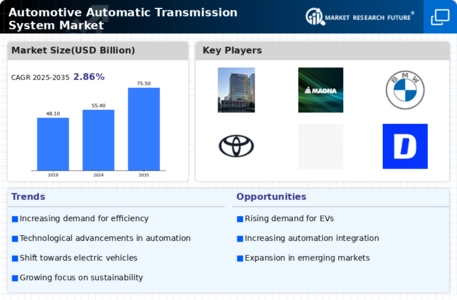
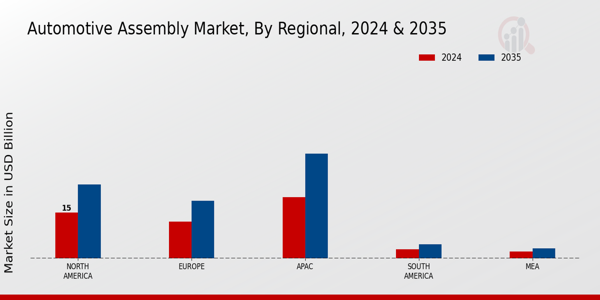
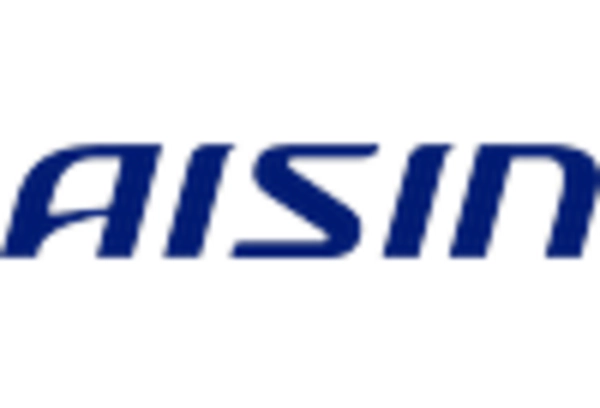
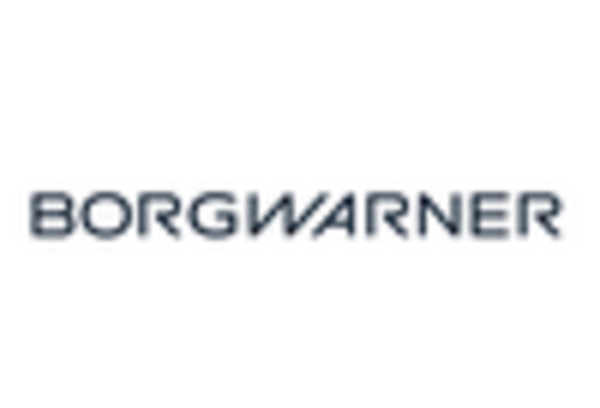

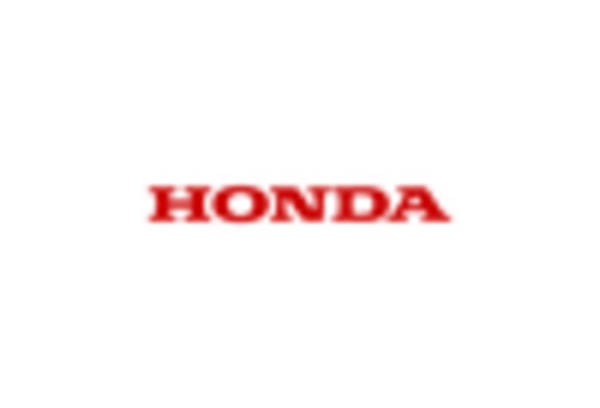
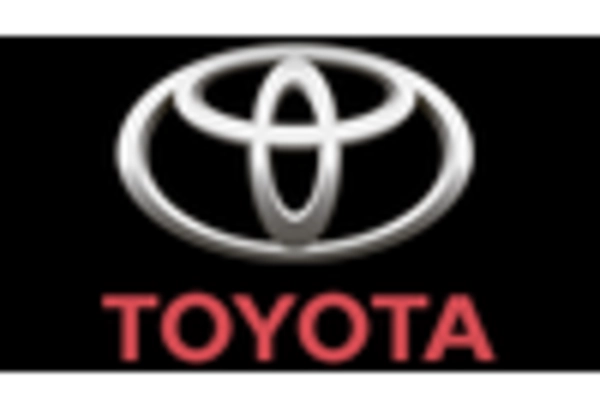
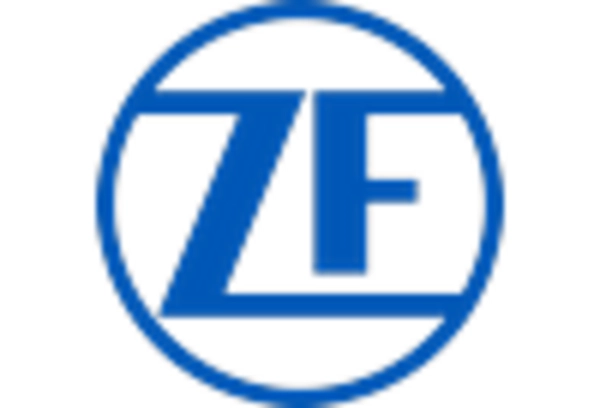

Leave a Comment